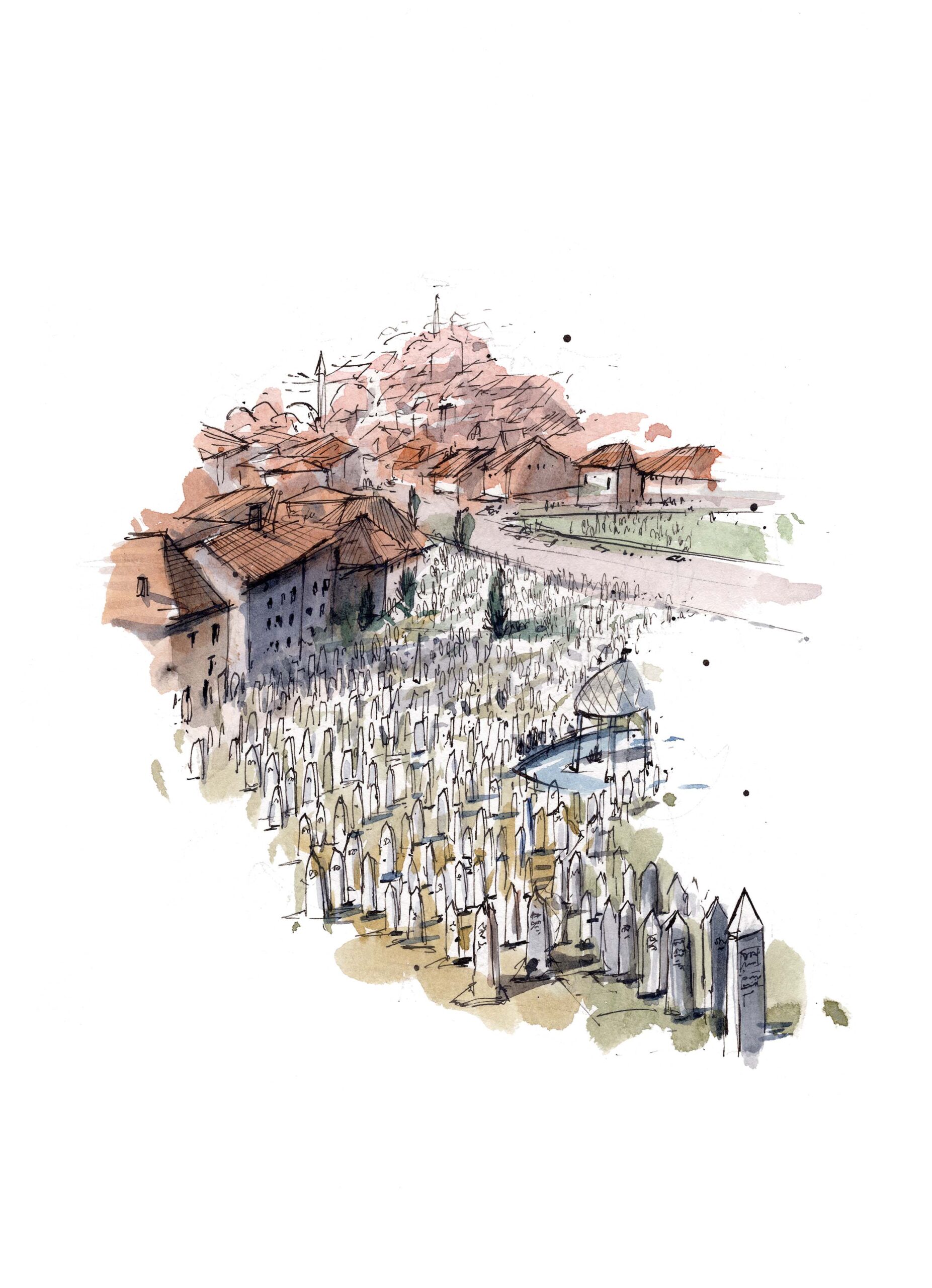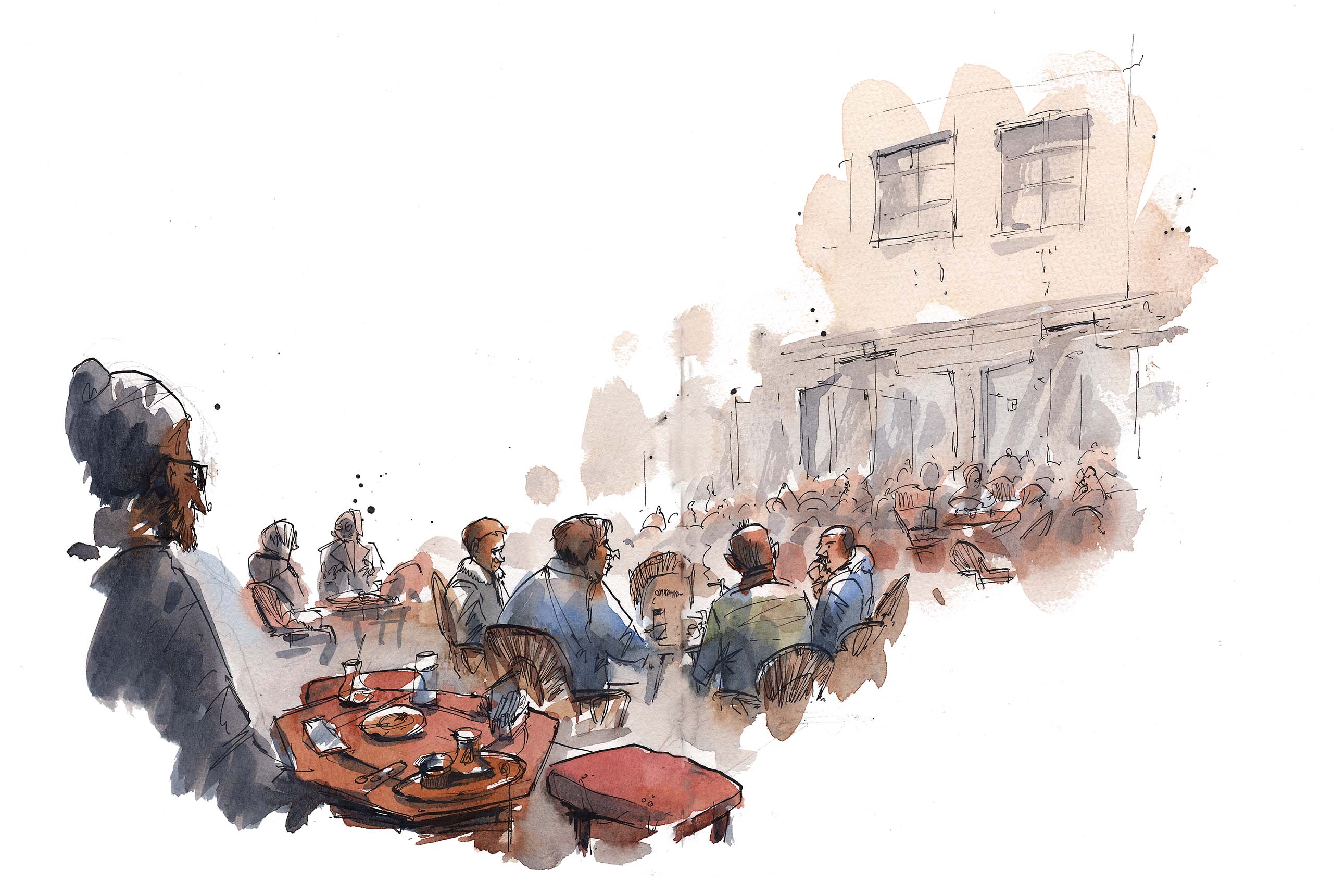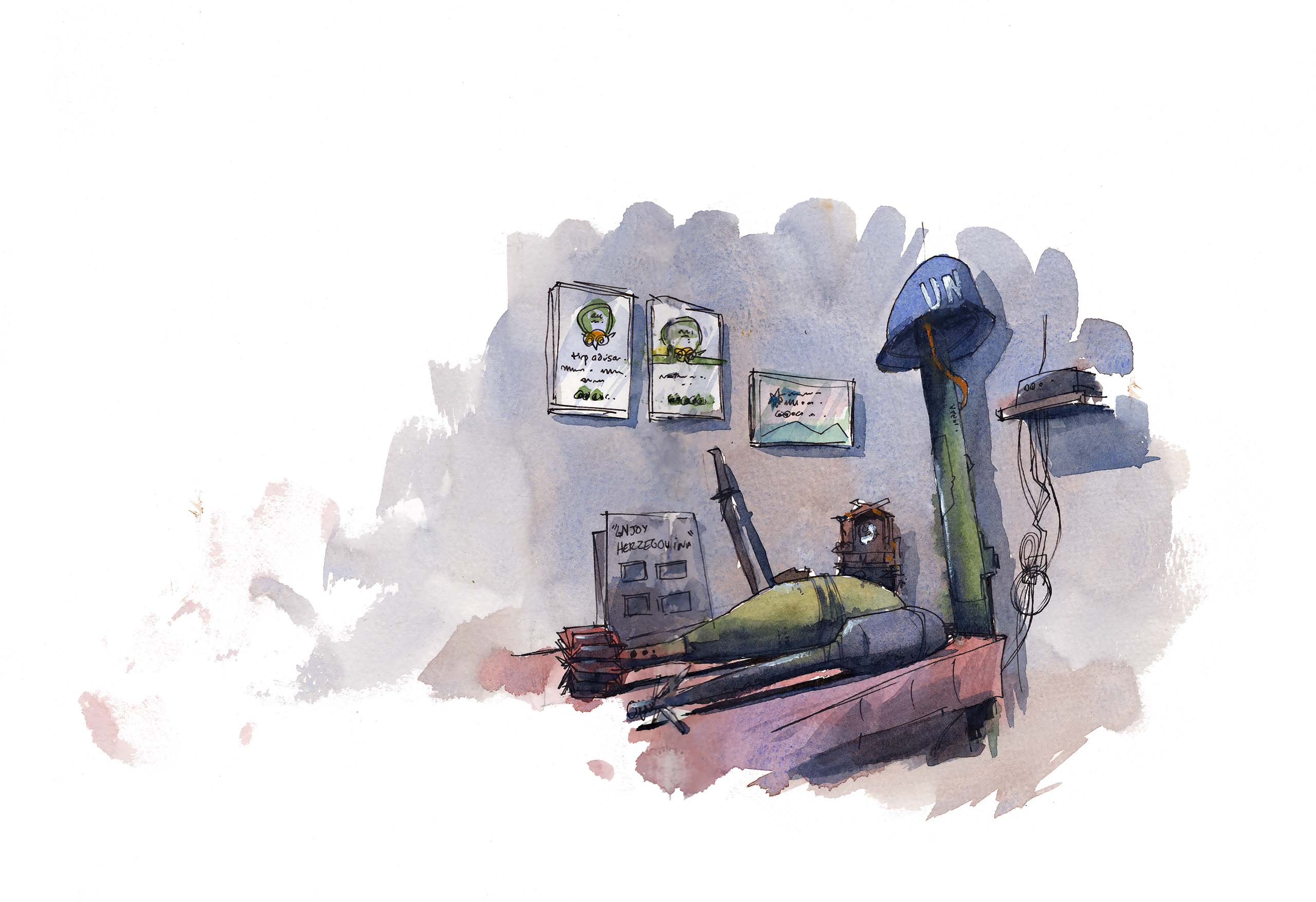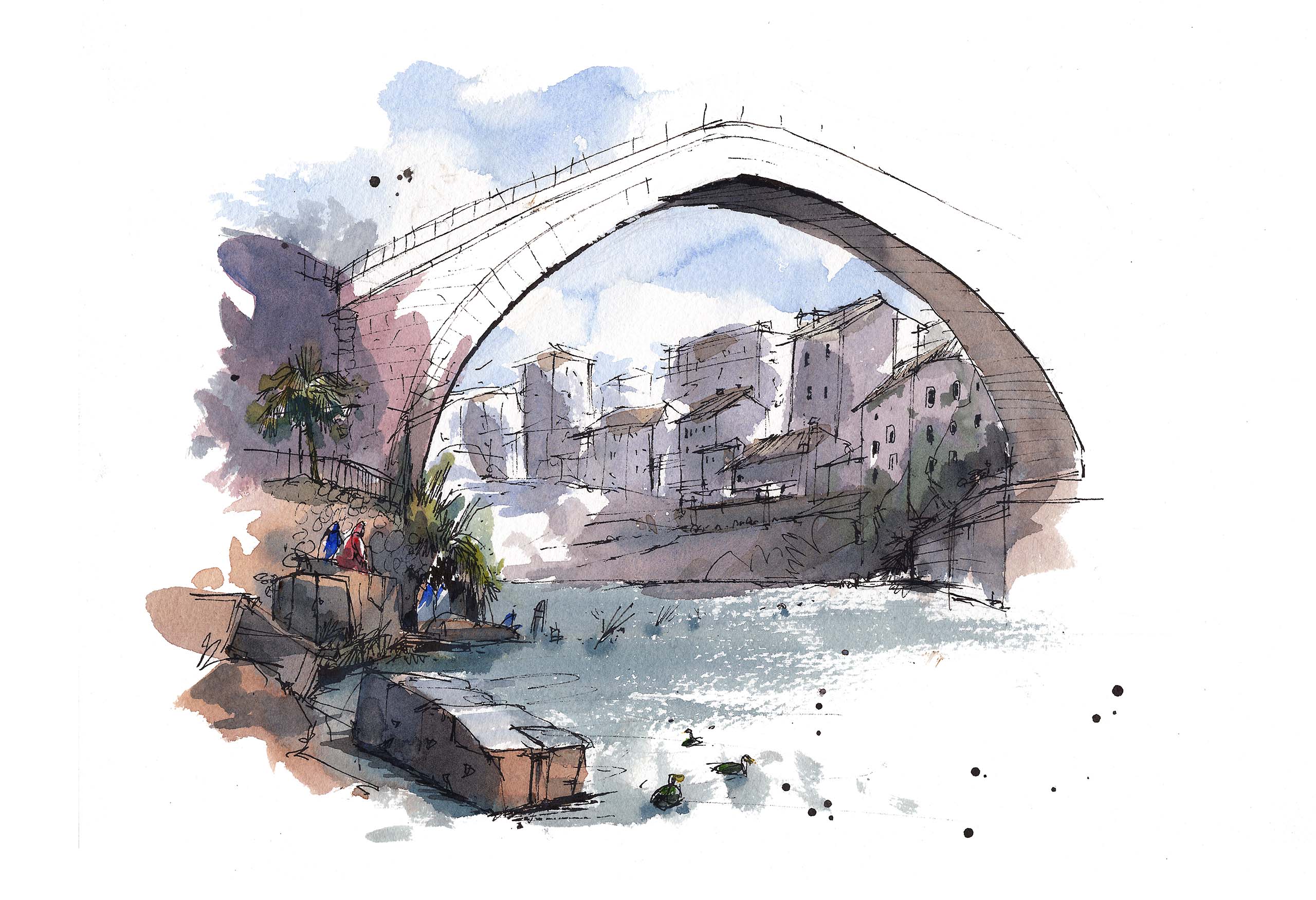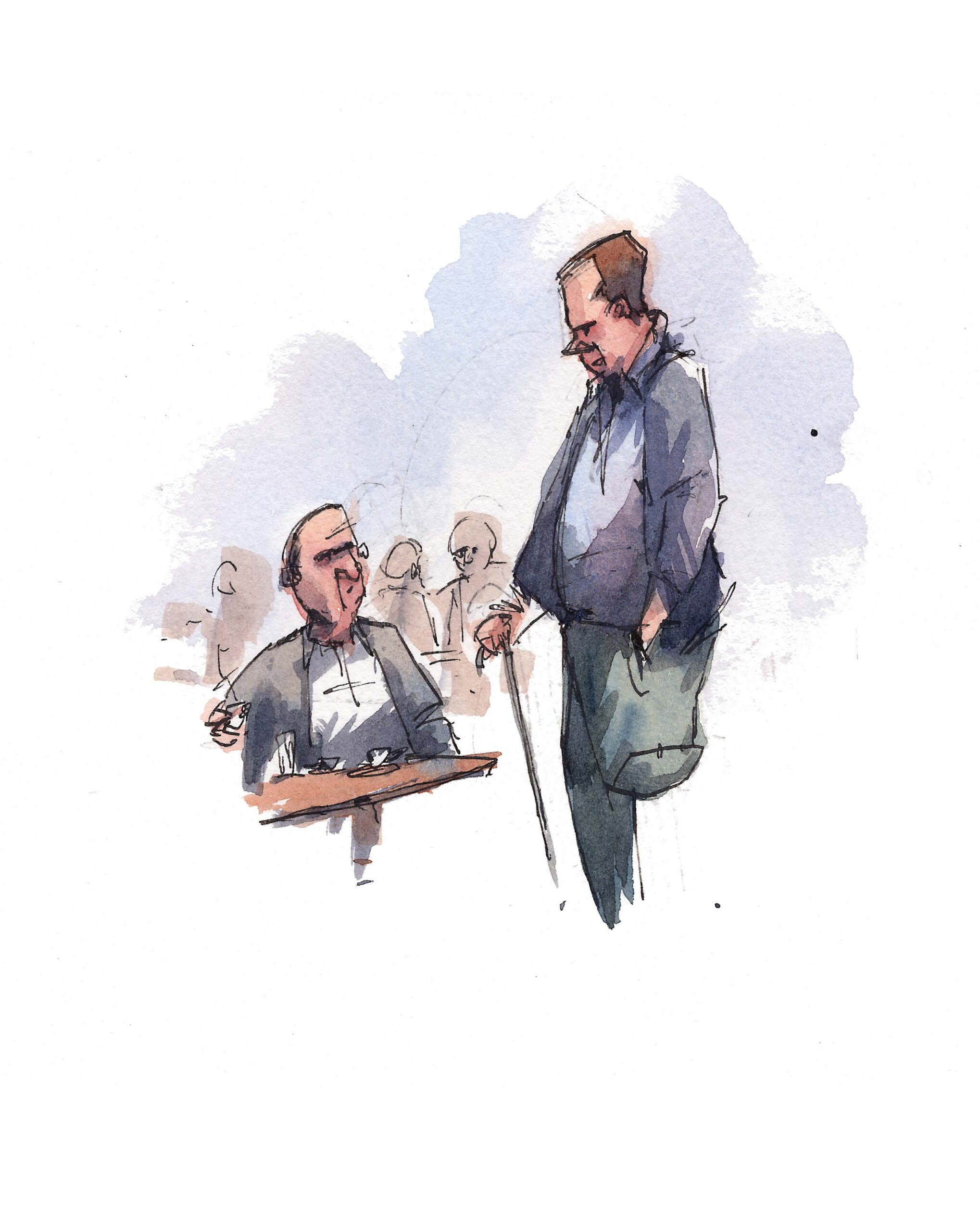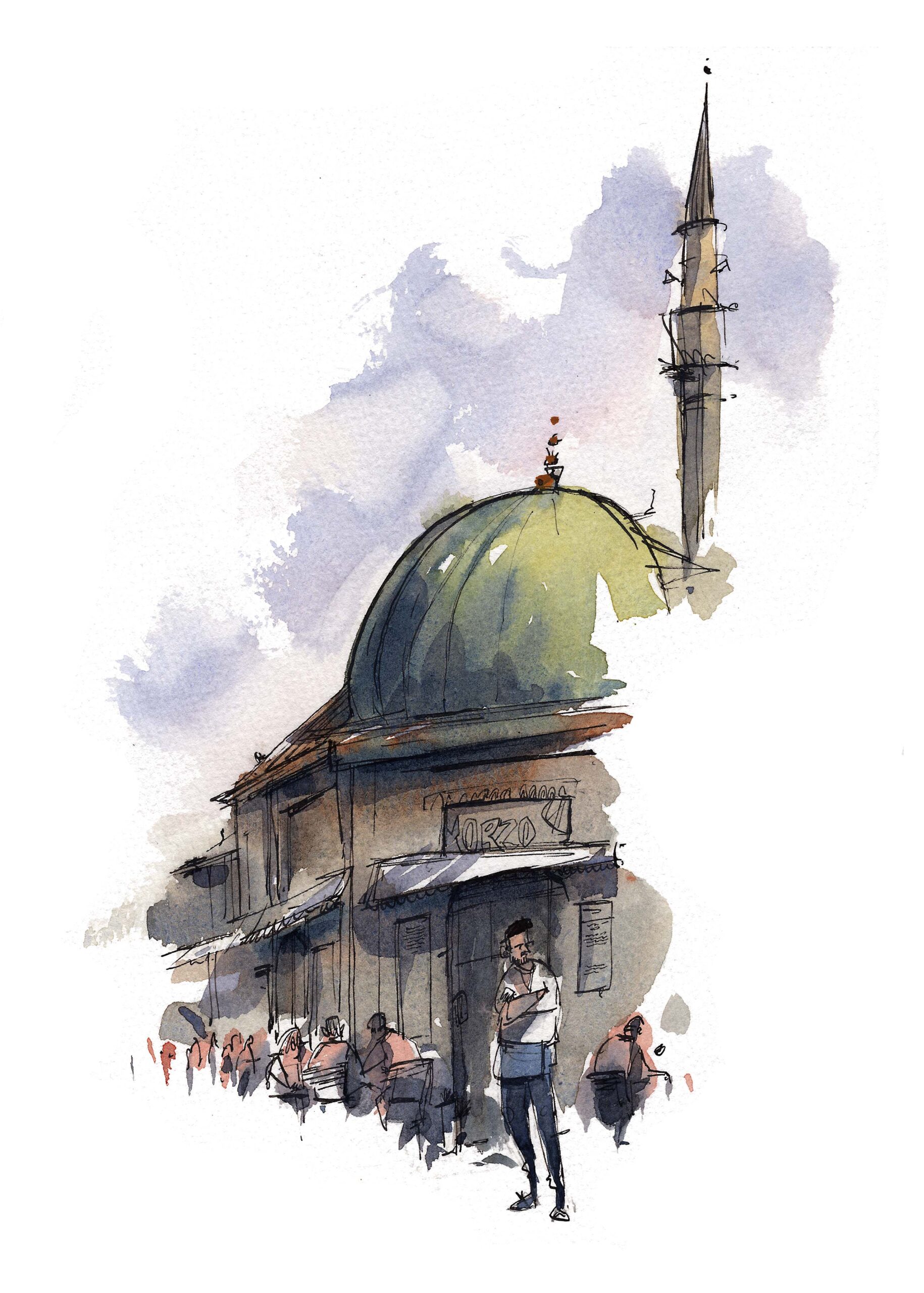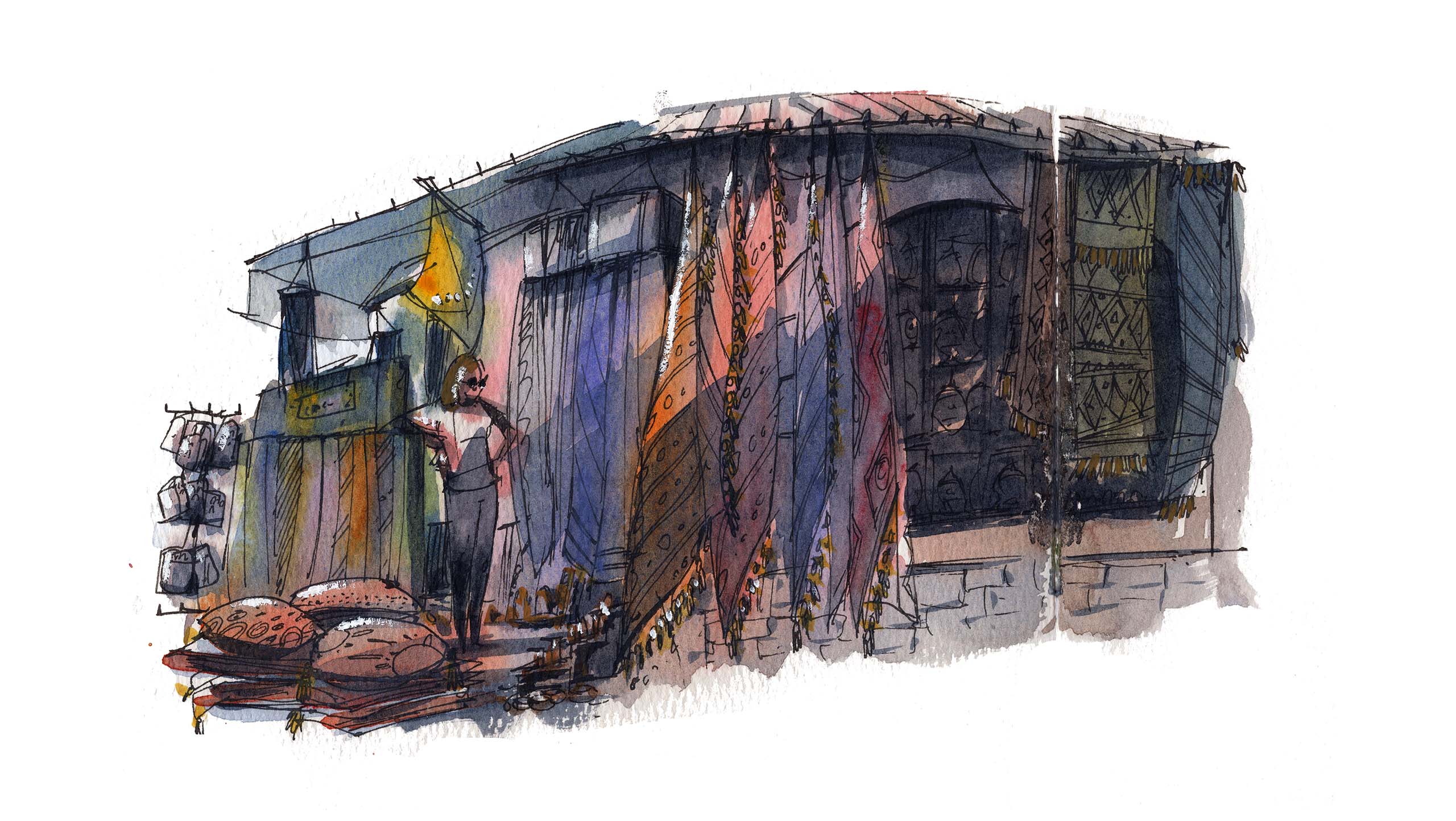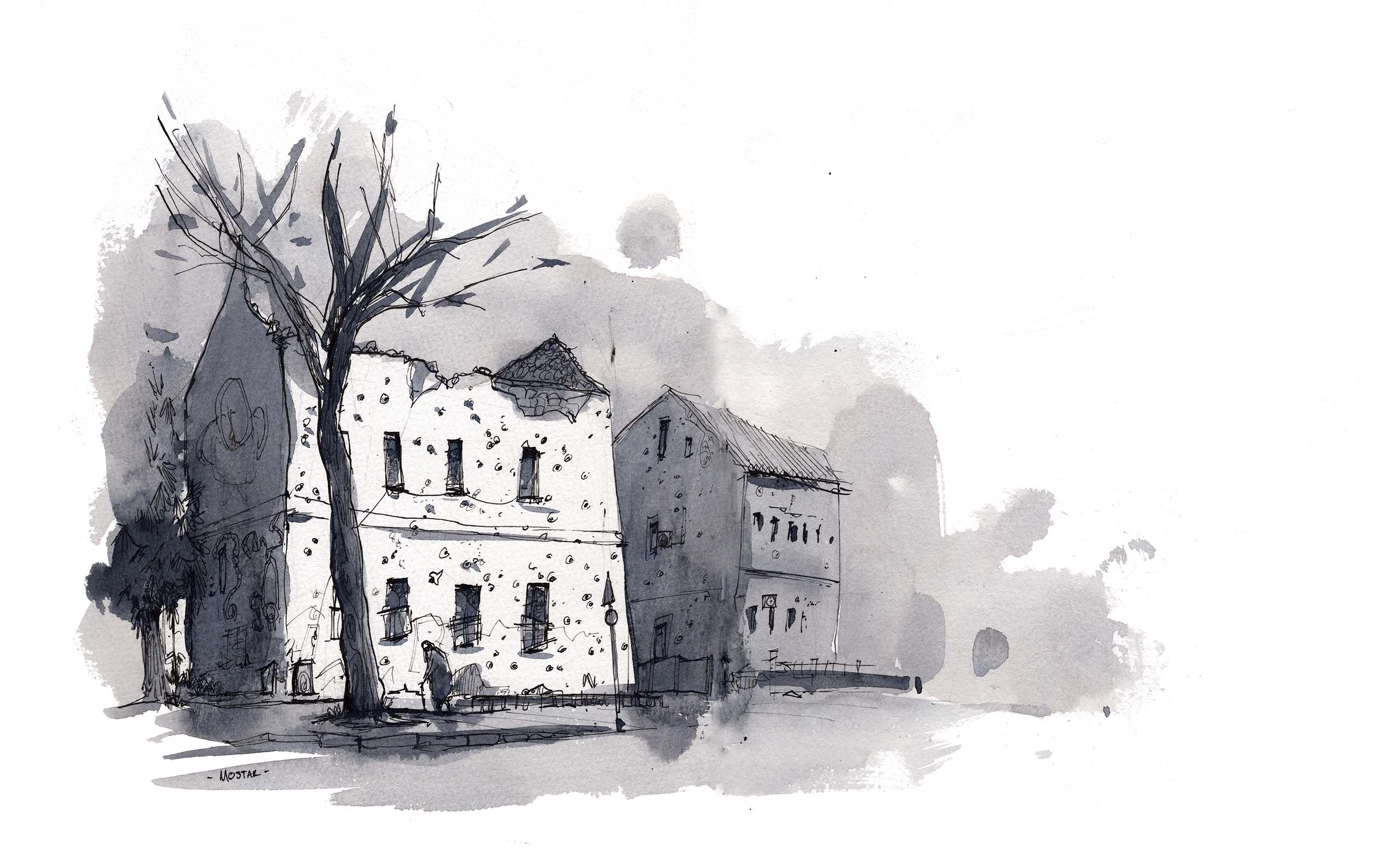The war in Bosnia and Hercegovina lasted from 1992 to 1995. In the time since an entire generation has come across Europe with little understanding of what happened in the Balkans. While Ukraine continues to, rightfully, dominate the news in Europe, Bosnia serves as a reminder that even though wars may end, the consequences can linger for decades on.
These 12 illustrations do not cover the entire war. No illustration project ever could, but what I’ve aimed to do is use urban sketching and reportage illustration to observe, document and record what legacy that three decade-old war has had on the country. Many of the sights have been photographed countless times; I never intended to replace those but instead to use illustration as a fresh way to give a different, perhaps slower perspective on this topic.
I took a 10-day journey to the country to meet with people, walk around the towns and use watercolor and ink illustrations to capture what I saw. The illustrations here were all done on location, observing real people, buildings and events. I am thankful for the people who offered their stories, perspectives and suggestions of what to sketch. Many Bosnian people were eager to send me to certain areas to draw, or would offer extra information about areas I had already painted. I am grateful for these perspectives. In many ways these illustrations belong to them and their stories.
I’ve always wanted to get more involved in reportage illustration as I think it has a remarkable ability to offer a unique and unseen perspective on complex and challenging issues. The USk grant was immensely helpful in this, and their flexibility and patience when the project changed shape (and location) was invaluable in bringing the final project to life. That such a grant is offered at all is particularly important I think, in encouraging people to use on-location art to help illuminate issues we face in the world today.
These illustrations cannot solve any of the challenges Bosnia or Europe currently faces, but they can shine a light on the consequences of war and the true cost many years on.
Cemetery Sarajevo
Bosnia has some of the largest cemeteries in Europe – this is just one of them. From a distance the cemeteries are so large that they appear like snow on the mountains, flowing downhill. On a cable car in Sarajevo I mistook this cemetery for exactly that – assuming the white gravestones on the hillside were leftover snow from winter. I drew these distinctive Islamic gravestones from Yellow Castle.
Bistrik Tower
I was told much later in my trip that Bistrik Tower and Observatory in Sarajevo were used by some disillusioned Serbian soldiers who became weary of conflict and used this to ‘waste bullets’ inside of attack Sarajevo below. Whether this is true or not I can’t say, but what is certain is the sheer volume of bullet holes in the building and the eerie, isolated loneliness of the tower up on the hillside near the former Winter Olympics park.
Sarajevo Cafe
It was important for me to show that for all the war damage, life goes on in Sarajevo – the capital city. This is one of the many Ottoman-era cafes in the city centre where the predominantly young population socializes late into the night with coffee and tea. In this setting you wouldn’t guess that there had ever been a conflict in the city.
Croatian bunker
This is the former front line in the town of Mostar which is now an unassuming street with an elementary school. What is most startling is that this Croatian military bunker remains, almost untouched since the mid 90s. The sandbags, the sniper holes and the shelled out central cavern are still visible almost 30 years after it was used. Quite why this has still be left intact is unclear.
Mostar front line
Many of these buildings like this on the former front line remain unoccupied and damaged because the local government can’t refurbish or demolish them without the owner’s permission. Many of the owners are impossible to locate, most likely because they were killed in the war or fled the country.
Former solider’s living room
This is the living room of a former Bosnian soldier who has turned his family home into a guesthouse in recent years for the tourists who visit his home of Mostar. The living room includes an, almost bizarre collection of war artifacts from missiles, mortar shells and discarded UN helmets. All of these sit in contrast to his Trip Advisor certificates which sit proudly above – an odd contrast between the two different eras of the country.
Resident’s home
I found this home walking late one night in Mostar. The building had been so badly damaged by bullet holes and shelling I assumed it was abandoned, but I was surprised to see lights on inside on the top two floors. Despite how it seems many of these damaged buildings are still occupied even though many of the floors are unlivable.
Old Bridge Mostar
My guide to the city told me that this famous bridge in Mostar had no strategic relevance in the war, but the symbolism of it caused it to be a target and was destroyed by Croat forces. It was rebuilt in the 2000s and stands as an enduring reminder of resilience in the city. Some of the remains of the old bridge can be seen in the foreground of the picture.
War Veteran
One of the grim legacies of the war is the enduring presence of landmines scattered across the country. There have been over 8,000 victims of landmines since the war started to this day and it continues. Although some die, the majority are injured and require amputations leaving a high proportion of the victims disabled. The urban area around Mostar is now mine-free but the surrounding countryside still has many.
Cafe Korzo Mostar
The religious diversity of can be seen in this picture where a mosque aligns perfectly with the front of a cafe – giving the impression that they are one and the same. Cafe culture remains a key part of modern and traditional Bosnian life.
Mostar rug shop
Since Croatia adopted the Euro, the former battleground of Mostar has seen a dramatic increase in tourist numbers from Dubrovnik, only 2 hours away. Many souvenir stalls selling rugs and scarfs like these line the cobbled streets of Mostar’s historic old town district.
Opposite sniper tower.
One of the most devastated buildings I came across in Bosnia was this hollowed out home opposite Mostar’s infamous ‘sniper tower’. A former high-rise building that was used by opposing sides as a sniper point due to its visibility across the city. I have never seen so many bullet holes in a single building in my life and the fact this structure is still standing is something remarkable in itself.
Partilha
Recent Posts
Drawing Attention June 2024
Drawing Attention, a zine oficial da organização Urban Sketchers, comunica...
Ler MaisVolunteer Opportunity: Urban Sketchers Seeks Fundraising Director
HOME Are you passionate about art and fostering a global artistic community?...
Ler MaisThe USk Regional Events Grant Funding Programme 2024 / 2025
Season three of the USk Regional Events Grant Funding Programme is...
Ler MaisVisite a nova loja USk
Adivinha só? A nossa loja Urban Sketchers acabou de subir de nível com algumas...
Ler Mais